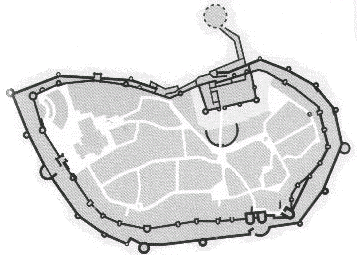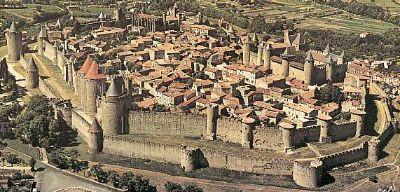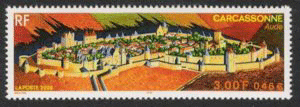|
We now tend to distinguish very clearly between a castle and a walled town, but the distinction hardly existed during the time of the Cathar Wars in the thirteenth century. Towns often grew up around castles and other towns generally built, or evolved, a citadel often protecting the principal entrance. The (modern) plan of Carcassonne on the right shows a typical medieval arrangement with a castle nestling against the wall of the city and protecting one of the two entrances to the city. (Carcassonne boasts three spectecular barbicans - two of them protecting the city entrances and one protecting the castle within the city so that it would still be defensible even if the city fell. These castle-city complexes were typical of the defensive positions besieged during the Cathar Wars and are sometimes referred to as castra. |
|
We now tend to distinguish very ckearly between a castle and a walled town, but the distinction hardly existed during the time of the Cathar Wars in the thirteenth century. Towns often grew up around castles and other towns generally built, or evolved, a citadel often protecting the principal entrance.
|
The Latin word castrum (pl castra) was used by the ancient Romans to denote an area constructed for use as a military defensive position. In classicalLatin the word castrum always means a great legionary encampment, both marching, temporary ones and the fortified permanent ones, while the diminutive form castellum was used for the smaller forts, which were usually, but not always, occupied by the auxiliary units and used as logistic bases for the legions. The pricipal was similar to - but much more formal than - the medieval arrangement partially because there were no longer standing armies in medieval times. |
|
Contemporary chroniclers were inconsistent in their terminology and sometimes the same chronicler uses different terms to describe the same fortification.
The medieval defences typically included, as well as barbicans:


 Other
Castra in the Cathar Wars include:
Other
Castra in the Cathar Wars include:





